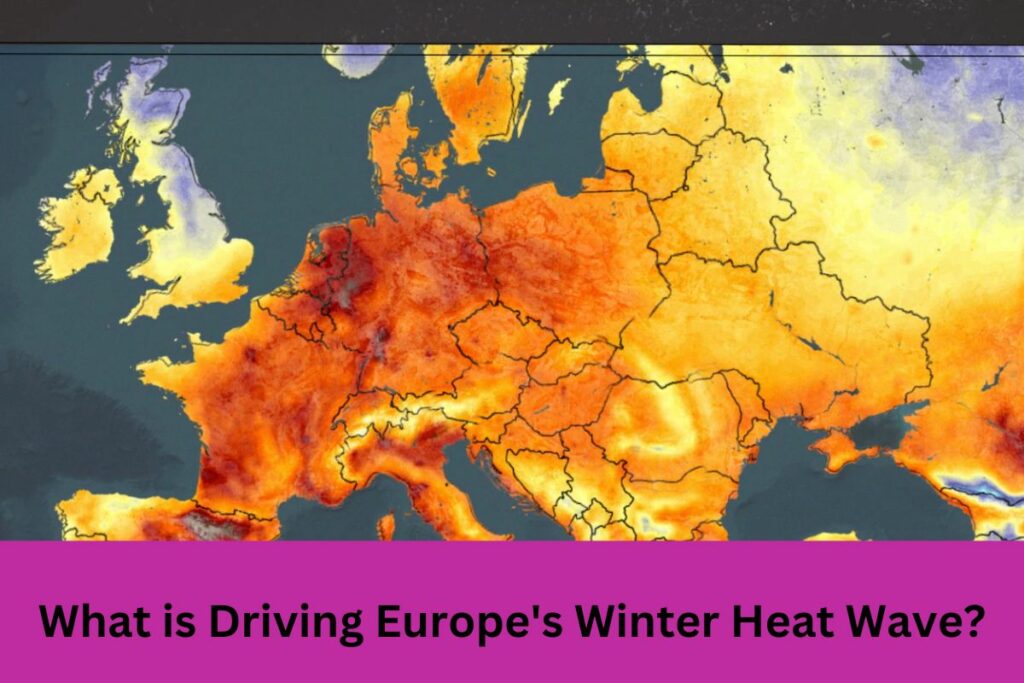According to The Washington Post, several sections of Europe saw an extraordinary winter heat wave over the New Year’s weekend. Temperatures rose by 10 to 20 degrees Celsius over usual, according to experts. According to the research, at least seven countries experienced their warmest January on record. Poland, Denmark, the Czech Republic, the Netherlands, Belarus, Lithuania, and Latvia were among them.
Temperatures may have risen to summer or springtime levels, according to climatologists. According to The Guardian, the temperature in Korbielów, a small village in Poland, reached 19 degrees Celsius – a temperature the region is more accustomed to in May, and 18 degrees Celsius over the one-degree Celsius yearly average for January. Meanwhile, temperatures in portions of Belarus, where they usually stay around zero degrees Celsius, reached 16.4 degrees Celsius on January 1. There is something between the Supreme Court justices.
You May Be Interested In:
- After Being Re-elected, What Will Newsom Do?
- Mastriano, a Trump Supporter, Has Conceded the Governorship of Pennsylvania
Table of Contents
What Exactly Is A ‘Bomb Cyclone’?
According to a report in The Washington Post, the continent is experiencing an unusually warm spell due to the creation of a heat dome over the region. The Indian Express investigates what it is and how it came to be.
What Exactly Is A Heat Dome?
A heat dome forms when an area of high-pressure traps warm air over a region for a lengthy period of time, much like a lid on a pot. The longer that trapped air remains, the more the sun tries to heat it, resulting in warmer conditions with each passing day. Heat domes typically last a few days, but they can sometimes last weeks, causing lethal heat waves.
According to scientists, any zone of high pressure, whether a heat dome or not, drives air to sink, where it is compressed and becomes even warmer. Furthermore, as air sinks, it becomes drier, raising the temperature of the surrounding area.
What Is The Connection Between Heat Domes And Jet Streams?
The creation of the heat dome is linked to the behavior of the jet stream, which is a fast-moving band of air high in the atmosphere. The jet stream is thought to have a wave-like pattern that moves from north to south and then back north.
When these waves become larger and longer, they move slowly and occasionally become immobile. This occurs when a high-pressure system becomes stuck, resulting in the formation of a heat dome. Although heat domes are believed to have always existed, experts believe that climate change is increasing their intensity and duration. They predict that as temperatures rise, the jet stream will become wavier and deviate more, resulting in more frequent extreme heat episodes.
What Are Some Examples Of Heat Domes In The Past?
A heat dome erupted over western Canada and the United States in 2021, causing devastating heat waves. The temperature in Portland, Oregon, reached 46 degrees Celsius, while in Washington reached 49 degrees Celsius. Temperatures in Lytton, British Columbia, reached more than 46 degrees Celsius.
Hundreds of people are estimated to have died as a result of this terrible weather event, according to media reports. Following that, a 2022 study discovered that climate change exacerbated this heat dome and that it might become a once-in-ten-year event if global temperatures are not kept below two degrees Celsius above pre-industrial levels.
The dry soil, one of the consequences of rising temperatures, “possibly allowed the heat to grow more intense, and therefore they enhanced the heat that was already at a high level,” according to the researchers. In September 2022, another heat dome will settle over the United States, raising temperatures to an all-time high. The high temperatures fanned wildfires and put a strain on the electricity grid.

